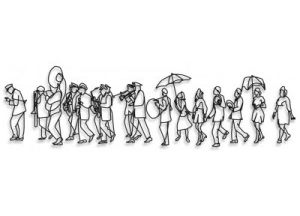
My Mardi Gras hangover cure didn’t involve a greasy breakfast with an aspirin, chased by a strong cup of coffee. My hangover cure was delivered via the brilliant idea Brandon Rowberry of United Healthcare Group shared at the recent Frost & Sullivan Innovation in NPD & Marketing conference in New Orleans. Brandon discussed how his team had a product that just wouldn’t die. They would launch the product to less than rave reviews, bring it back inside for tweaks, and then launch it again only to have it fail again. Not wanting to forfeit, the team tried in vain to make it work until someone finally had the courage to put a stake in it and call it what it was – dead. Here’s why your new product development process should include having a funeral after killing a product.
We’ve all been there. Every company has had that idea that they were certain was a winner and it just didn’t make it. There is emotional attachment and you don’t want anyone to call your baby ugly. So much energy, time, money, creativity, and resources helped to birth it, only to see it killed. It is sad. But what Rowberry did that shook me out of my beignet stupor, was proper and perfect. He held a funeral. He gathered the entire project team, everyone that had touched the product in its rocky history, met them in the auditorium and they had a funeral. An executive even gave a eulogy. People mourned the loss but also got to focus on what they learned. They learned that failure isn’t bad. And most important of all, it was closure.
The image of this funeral got me thinking. I was in New Orleans after all and what a better frame of reference for killing a product or project than to have a jazz funeral. For those unfamiliar, locals often have jazz funerals for their dead. On the way to the cemetery, it’s sad jazz with a somber tone. It’s the time to grieve the loss. But after the dead have been buried, the jazz turns upbeat as those closest to the dead celebrate the impact that person had on their lives.
We can do the same thing with our killed projects and products. You tried hard and did the best you could, but let’s learn from it and realize the positive impact it had on our team, our brand, and our company. Lessons were learned about what doesn’t work so you can do better the next go around. (As one of my idols, Dr. Maya Angelou says: “When you know better you do better.”) And here’s the bonus: by making the kill, you’ve saved time, saved money, reallocated resources to winning products, and released the mental energy that was being consumed by keeping the project on life support. Hooray! Strike up the band!
You might be asking yourself, “How do we know for certain a project should be killed?” Answering this simple question is often a struggle for development teams. The Fourth Product Portfolio Management Benchmark Study shows the leading causes of this pain are the kill criteria being unclear or nonexistent and the lack of rigor in determining the highest return, highest value products.
There’s also a softer side. No one wants to hurt the feelings of innovators or give up on a project that’s already consumed so many resources. Organizations must also change their culture so a product’s success or failure isn’t personal and feelings aren’t a metric. Product development companies and team leaders can’t be afraid of failure. They need to raise their hurricane drink (or white flag; whatever you prefer) high into the air and call it like it is. Dead.
The jazz funeral plays out this way, dealing with the emotional side culturally and celebrating the lessons learned to make future decisions with confidence. Take a hard look at your portfolio. What projects are on life support and draining resources? It might just be time to make funeral arrangements.




